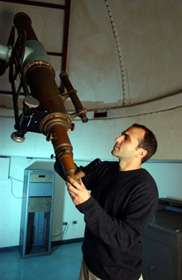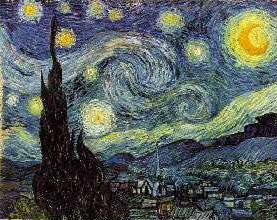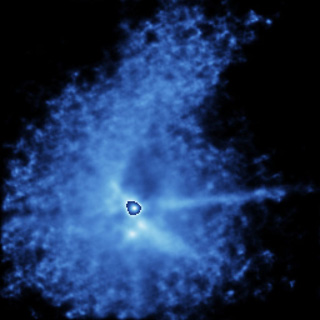The heavens may be full of stars like our Sun complete with planetary systems just like ours, according to a new study by US astronomers. David Weintraub and Jeff Bary of Vanderbilt University in Nashville Tennessee have studied the planetary disks around T Tauri stars and reckon the astronomical received wisdom about them may be wrong. They suggest there may be a lot more planets circling stars like the Sun than current models of star and planet formation predict.
Most astronomers think planetary systems are common, Weintraub told Spotlight. However, this belief doesn’t match up well to the combination of astronomical measurements, as interpreted up to this time, and planet formation theory. The measurements indicate the disks out of which planets would form disappear in only a few million years. The astronomers who make these measurements and interpretations still tend to think planets are common; however, they are not sufficiently well aware that the timescale for the dispersal of the disks, as interpreted by them, is too short as compared to the timescale required by theory for the formation of planets.

David Weintraub
The assumption is based on observations of T Tauri stars, stellar adolescents just a few million years old, which resemble the young Sun. The classic T Tauri star – less than 3 million years old – usually has a thick protoplanetary disk of dust and gas, which glows brightly in the infra-red region of the spectrum. Their older T Tauri siblings show no signs of encircling disks. This has led astronomers to assume the disk is gone in five million years; but, says Weintraub, the astronomers making this assumption don’t follow that to the logical conclusion that this is before planets form. He believes this is because modern theory of planet formation is simply not well known. Nevertheless, he adds, it is true that, based on the best current theories, the disks disappear in less time than is needed for the planets to form.
However, Weintraub and Bary argue that instead of the basic planetary building blocks being lost from around the star, the material may simply be evolving in ways that makes it invisible to Earthly telescopes. These stars are labelled as naked or weak line T Tauri stars. The Vanderbilt team has already begun gathering evidence that suggests planetary systems similar to our own may be relatively commonplace. The team published its preliminary findings in September in the journal Astrophysical Letters and will publish the full evidence in support of their hypothesis in The Astrophysical Journal later this year.

Jeff Bary inspecting the historic 6-inch telescope used by Edward Barnard in the 1880s (Photo by Daniel Dubois)
Weintraub is not happy with the conventional wisdom: Approaching it from a planetary evolution point of view, I have not been comfortable with some of the underlying assumptions, he says. Current models do not take the evolution of protoplanetary disks into account. Over time, the disk material should begin agglomerating into solid objects called planetesimals. As the planetesimals grow, an increasing amount of the mass in the disk becomes trapped inside these solid objects where it cannot emit light directly into space. So, Weintraub suggests this prevents astronomers on Earth from seeing any infra-red glow from the disk. Rather than the disk material dissipating, explains Bary, It may simply become invisible to our instruments.

Starry night
The team has looked instead for the presence of molecular hydrogen around adolescent T Tauri stars, this material would be the main constituent of a protoplanetary disk and the characteristic spectral signal should persist even when dust grains and carbon monoxide, the other major constituents are locked out of site. T Tauri stars are strong X-ray sources and this, the astronomers reasoned, should provide enough energy to stimulate any molecular hydrogen around the star so that astronomers could detect its faint glow. When they pointed the four-metre National Optical Astronomical Observatory telescope in Kitt Peak, Arizona at their prime targets – naked T Tauri stars such as the one known as DoAr21 – they saw the faint signal of molecular hydrogen.

The T Tauri Star Forming System (Credit : C. & F. Roddier (IfA, Hawaii), CFHT)
Weintraub and Bary admit that they have more work to do to in order to convince their colleagues to adopt their theory. They have been allocated time on a larger telescope, the eight-metre Gemini South in Chile and plan to survey 50 more naked T Tauri stars to see how many of them produce the same molecular hydrogen emissions. If a large number of them do, it will indicate that they have discovered a general mechanism involved in the planetary formation process.
Coincident with the publication of Weintraub’s results a team at Washington University has cast doubt on the assumption that it takes millions of years to form gas giant planets. Thomas Quinn and his colleagues reckon that if gas giants don’t form quickly they won’t form at all. Moreover, when he says quickly he means quickly – a few hundred years rather than the statelier multi-million-year pace associated with astronomy.
Quinn has used a highly refined mathematical model to look at the formation of planets. His findings suggest that the protoplanetary disk begins to fragment after just a few spins around its star. As the disk fragments, clusters of matter begin to form quickly and start to draw in the gases that form vapour shrouds around gas giants. If these planets can’t form quickly, then they should be a relatively rare phenomenon, whereas if they form according to this mechanism they should be a relatively common phenomenon, said Quinn.
According to the present theory, it takes between 1 and 10 million years to form a gas giant, a Jupiter or a Saturn and even longer to form a rocky solid planet like the Earth or Mars. If they are forming this quickly then perhaps Weintraub and Bary’s sightings of molecular hydrogen are simply revealing the last traces of a protoplanetary disk lost to space or absorbed by the star. Otherwise, astronomers should be able to see the planets around the T Tauri already.
Further reading
Quinn et al, Science, 298, 1756 (2002)
http://www.sciencemag.org/cgi/content/short/298/5599/1756
David Weintraub
http://www.vanderbilt.edu/AnS/physics/cv/weintraub_cv/frontpage.html
Suggested searches
T Tauri stars
Extrasolar planets
Formation stars planets